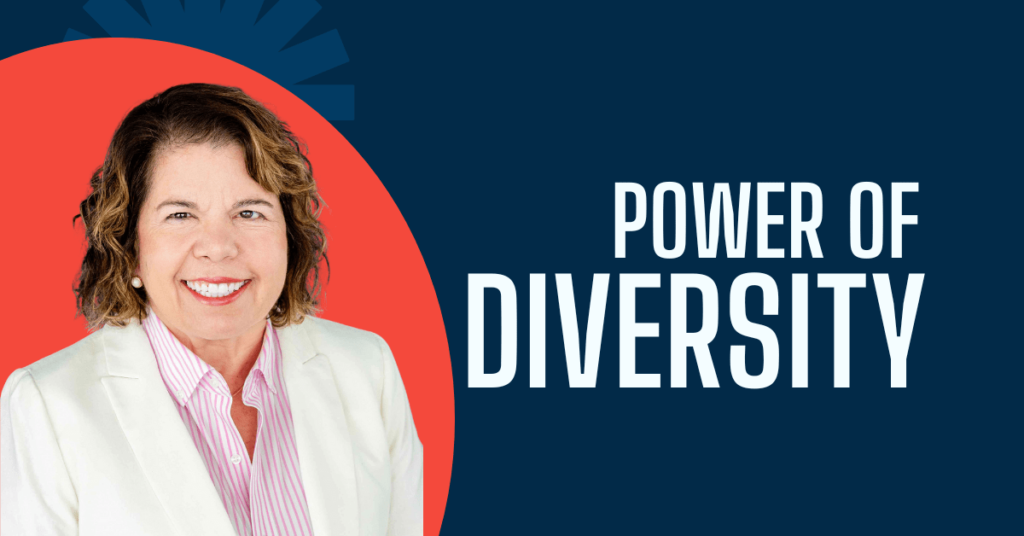Table of Contents
In today’s rapidly evolving business landscape, the power of diversity and inclusion has emerged as more than just a moral imperative – it’s become a crucial driver of business success and innovation. Organizations that embrace diverse perspectives and foster inclusive environments are consistently outperforming their competitors, demonstrating that there’s genuine power in diversity.
Understanding the Power of Diversity in Modern Business
Today’s workplace is rapidly transforming, reshaping traditional business models and organizational cultures. As businesses expand globally and demographics shift, the power of diversity in the workplace has become increasingly evident. Companies that champion diversity, equity, and inclusion aren’t just doing what’s right – they’re setting themselves up for sustainable success in an interconnected world.
The Economic Impact of Diverse Leadership Teams
Research consistently shows that organizations with diverse leadership teams achieve superior financial results. Research by McKinsey shows that organizations ranking in the highest quarter for gender-diverse teams achieve 25% better profitability than their industry peers. The benefits of diversity and inclusion extend beyond financial metrics:
- Enhanced decision-making capabilities
- Increased market share and customer understanding
- Higher employee satisfaction and retention rates
- Greater innovation and creative problem-solving
- Improved company reputation and brand value
When leadership teams reflect diverse backgrounds and experiences, they bring varied perspectives to strategic planning and risk assessment, leading to more robust business strategies.

Breaking Down Barriers: Key Components of Inclusive Leadership
Building a truly inclusive workplace goes beyond diverse recruitment – it requires leaders to fundamentally transform their management philosophy and behaviors. Inclusive leaders share several key characteristics:
- Cultural Intelligence: Understanding and adapting to different cultural contexts
- Empathy: Actively listening and considering various perspectives
- Accountability: Taking responsibility for creating an inclusive environment
- Courage: Challenging traditional norms and addressing bias head-on
- Commitment: Demonstrating long-term dedication to diversity initiatives
Leaders who embody these traits create environments where all employees feel valued and empowered to contribute their best work.
How Diversity Fuels Creative Problem-Solving
The power of diversity and inclusion becomes particularly evident in problem-solving scenarios. Diverse teams approach challenges from multiple angles, drawing from their unique experiences and perspectives. This diversity of thought leads to:
- More innovative solutions to complex problems
- Better understanding of diverse customer needs
- Enhanced ability to identify market opportunities
- Stronger creative output and ideation
- Improved risk assessment and management
Companies that foster inclusion in the workplace see increased collaboration and creativity, as team members feel comfortable sharing their unique insights and challenging conventional thinking.
Implementing Inclusive Leadership Strategies
Moving from theory to practice requires a structured approach to implementing diversity and inclusion in leadership. Successful organizations recognize that creating an inclusive environment demands intentional effort and sustained commitment.
Building a Culture of Belonging: Practical Steps
To harness the power of diversity, organizations must take concrete steps to build an inclusive culture:
- Establish Clear Diversity Goals
- Set measurable objectives for diversity recruitment
- Create accountability mechanisms for leadership
- Track progress and adjust strategies as needed
- Provide Comprehensive Training
- Implement unconscious bias training
- Develop cultural competency programs
- Offer inclusive leadership workshops
- Create Support Systems
- Establish employee resource groups
- Implement mentorship programs
- Develop clear career advancement paths
- Review and Update Policies
- Ensure equitable compensation practices
- Implement flexible work arrangements
- Create inclusive benefits packages
- Foster Open Communication
- Encourage feedback and dialogue
- Create safe spaces for discussion
- Celebrate diversity successes
Measuring the Success of Diversity Initiatives
Companies need strong analytics and tracking systems to measure the real impact of their diversity and inclusion initiatives.
Key Performance Indicators (KPIs):
- Demographic representation at all levels
- Employee engagement scores across different groups
- Retention rates among diverse employees
- Promotion rates and career advancement metrics
- Pay equity analysis results
Regular Assessment Tools:
- Employee surveys and feedback sessions
- Exit interview analysis
- Climate assessments
- Leadership effectiveness evaluations
Success in diversity and inclusion initiatives requires continuous monitoring and adjustment. Organizations should:
- Regularly review and update diversity goals
- Analyze the effectiveness of current programs
- Identify areas for improvement
- Celebrate progress and success stories
- Address challenges promptly and transparently
By implementing these comprehensive strategies and measuring their impact, organizations can create truly inclusive environments that maximize the power of diversity.
The power of diversity in today’s business world cannot be overstated. Organizations that successfully embrace diversity, equity, and inclusion position themselves for sustained success in an increasingly complex global marketplace. Through committed leadership, intentional action, and continuous improvement, companies can create environments where diverse perspectives thrive and drive innovation.
The journey toward true inclusion requires patience, dedication, and unwavering commitment. However, the rewards – enhanced innovation, improved financial performance, and stronger organizational culture – make it an investment worth making. As we move forward, the organizations that recognize and harness the power of diversity will be the ones that lead their industries into the future.
Rather than treating diversity and inclusion as standalone initiatives, organizations must embed these principles deeply into their cultural DNA. When done right, they become powerful catalysts for innovation, growth, and sustainable success.

